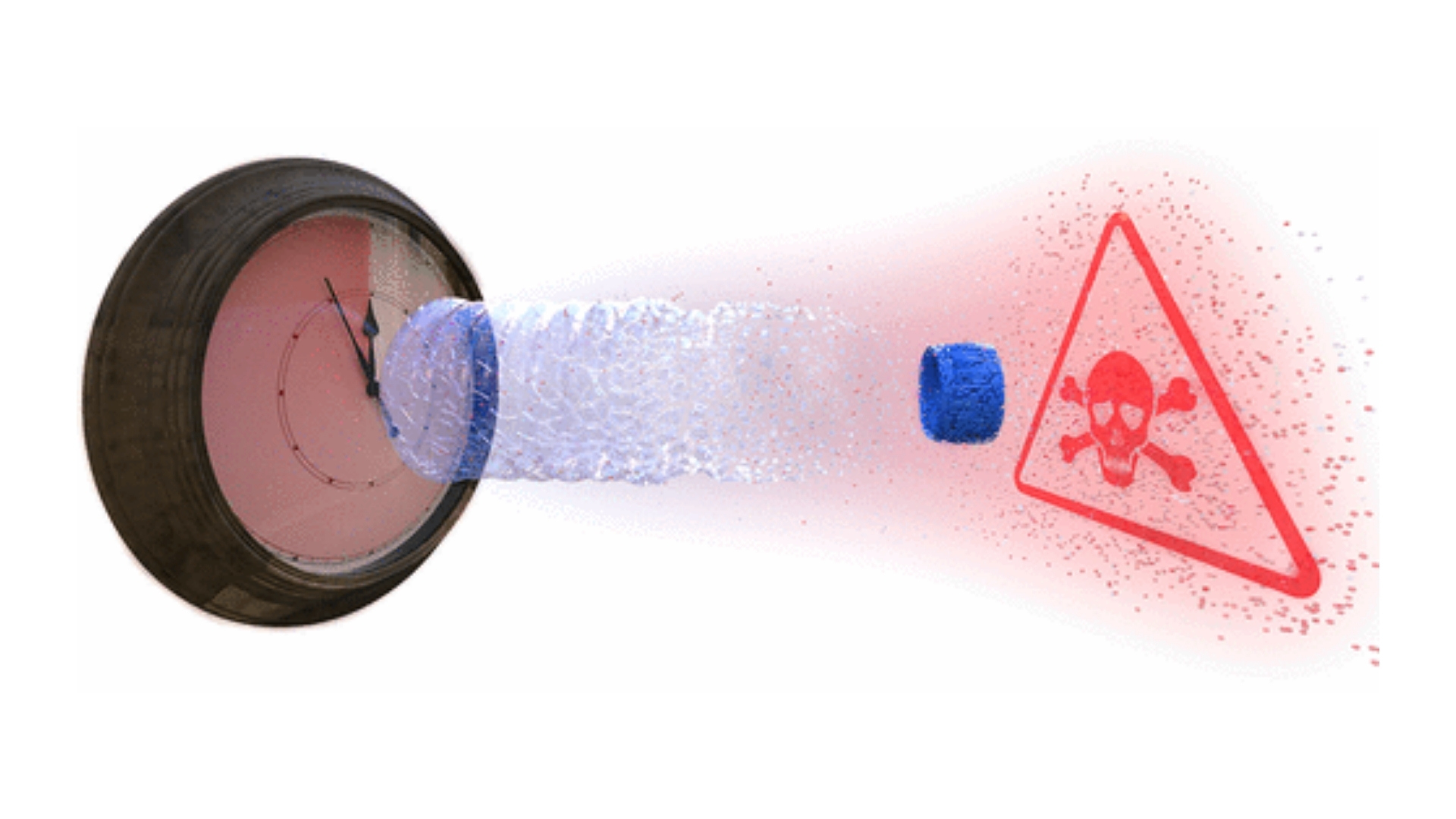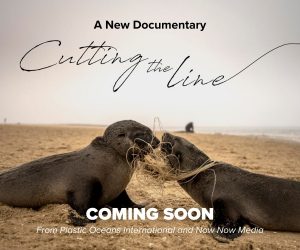“Time Is On My Side. Yes It Is.” Although, Not In The Case Of Plastic Pollution
A new publication in conjunction with Rolf Halden, from Arizona State University’s Center for Environmental Health Engineering at the Biodesign Institute, and Plastic Oceans International, reveals how time is often an overlooked element when it comes to studying plastic pollution [1].
The article, published in Environmental Science and Technology, argues that the threats of plastic pollution to humans, the environment and the organisms therein, have been well documented, but perhaps the most overlooked metric is time. The difference between a new plastic item purchased in a local store and that same item in the environment is time. The original item has a certain color, size, geometry, history of additives or coatings, etc., but it is time which changes all of that.
From the moment plastic trash ends up in the environment, to its breakdown and transition to smaller particles, much happens. Dangerous additives such as BPA or flame retardants included in the chemistry of the plastics can leach into the environment. Studies have demonstrated these same chemicals entering the environment and subsequent organisms within it. One study in particular demonstrated that seabirds ingesting plastic led to flame retardants being sequestered in their tissues [2]. Contaminants already present in the environment can adsorb to the surface of polluted plastics at much higher concentrations than what is found in the surrounding environment. Time plays a role here. For example, aged plastics were shown to concentrate up to 85% more chemicals than plastics that had not aged as much [3]. Part of this is owed to the formation of biofilms on the surface of the polluted plastics. Biofilms occur when the plastics are exposed to colonizing microorganisms. In time, these films can alter important characteristics of the plastics themselves.
Time, as it pertains to plastic pollution, is also an important factor relating to the size of the particles. Further weathering of polluted plastics turns macroplastics (larger than 5 mm) to microplastics (less than 5 mm) and then into the nano- world (less than 50 μm). These tiny nanoplastics are known to be the champions of accumulating dangerous chemicals due to their high surface areas [4]. Their small size also allows for them to enter the tissues of surrounding organisms. The health implications of this interaction are only recently being studied but it is suggested that foreign items entering the body can cause inflammation, which is a known precursor to cancer. Many of the organisms analyzed for the presence of micro- and nanoplastics are consumed by humans as well. Such was the case with oysters dissected on their way to a restaurant, which were found to contain microplastics. This research led scientists to estimate that 11,000 microplastics are ingested by humans yearly, stemming from oysters alone [5]. What effects do these particles have on our bodies? It’s unclear.
Time also allows plastics to travel the world, from the surface to the very deepest parts of our oceans, and from continent to continent. Research has shown that polluted plastics in our oceans can travel up to 1,000 miles, to delicate ecosystems potentially unable to withstand its presence [6]. Another study tracked a plastic bottle over 1,700 miles throughout a 94 day period, demonstrating yet again, how time plays a large role in the presence and impact of plastic pollution [7]. Increasing sources of plastic pollution are being identified, from wastewater treatment plants to rivers and lakes, and time allows them to continuously displace polluted plastics.
Lead author Rolf Halden states that when analyzing risks posed by plastic pollution, “we have entrenched camps with people talking passed each other. Some claim that many assessments for newly made plastic articles show that there are only negligible risks”. Dr. Halden goes on to point out that, “others feel threatened by the ubiquity of plastic debris in our environment, food and bodies. The reason for the disconnect is: time. The time that plastics spend in the environment transforms these initially innocuous large plastic products into the equivalent of shotgun ammunition, with much smaller dimensions and more dangerous chemical properties. Over time, the “safe plastics” we buy turn in the environment into a toxic hailstorm from which we cannot find shelter anymore. No exceptions. Everyone gets exposed. All the time.”
The time has now come for the transition away from first-generation, outdated plastics towards sustainable plastics or materials that utilize green chemistry.
- Halden, R.U.; Rolsky, C.; Khan, F.R. Time: A Key Driver of Uncertainty When Assessing the Risk of Environmental Plastics to Human Health. Environ. Sci. Technol. 2021, acs.est.1c02580, doi:10.1021/ACS.EST.1C02580.
- Tanaka, K.; Takada, H.; Yamashita, R.; Mizukawa, K.; Fukuwaka, M.-A.; Watanuki, Y. Facilitated Leaching of Additive-Derived PBDEs from Plastic by Seabirds’ Stomach Oil and Accumulation in Tissues. 2015, doi:10.1021/acs.est.5b01376.
- Bhagwat, G.; Tran, T.K.A.; Lamb, D.; Senathirajah, K.; Grainge, I.; O’Connor, W.; Juhasz, A.; Palanisami, T. Biofilms Enhance the Adsorption of Toxic Contaminants on Plastic Microfibers under Environmentally Relevant Conditions. Environ. Sci. Technol. 2021, 55, 8877–8887, doi:10.1021/ACS.EST.1C02012.
- Koelmans, A.A.; Besseling, E.; Shim, W.J. Nanoplastics in the aquatic environment. Critical review. Mar. Anthropog. Litter 2015, 325–340, doi:10.1007/978-3-319-16510-3_12.
- Van Cauwenberghe, L.; Janssen, C. Microplastics in bivalves cultured for human consumption. Environ. Pollut. 2014, 193C, 65–70, doi:10.1016/j.envpol.2014.06.010.
- Chenillat, F.; Huck, T.; Maes, C.; Grima, N.; Blanke, B. Fate of floating plastic debris released along the coasts in a global ocean model. Mar. Pollut. Bull. 2021, 165, 112116, doi:10.1016/J.MARPOLBUL.2021.112116.
- Duncan, E.M.; Davies, A.; Brooks, A.; Chowdhury, G.W.; Godley, B.J.; Jambeck, J.; Maddalene, T.; Napper, I.; Nelms, S.E.; Rackstraw, C.; et al. Message in a bottle: Open source technology to track the movement of plastic pollution. PLoS One 2020, 15, e0242459, doi:10.1371/JOURNAL.PONE.0242459.
Dr. Charlie Rolsky is Director of Science for Plastic Oceans International. He is also the host of Breaking It Down, With Charlie Rolsky – a YouTube series from Plastic Oceans that simplifies the science, while having a bit of fun. He conducts research at Arizona State University, where he works on marine and aquatic plastic pollution, a major concern within many ecosystems and environments around the world. Charlie worked with Dr. Halden and Dr. Khan on the article the blog post showcases.


